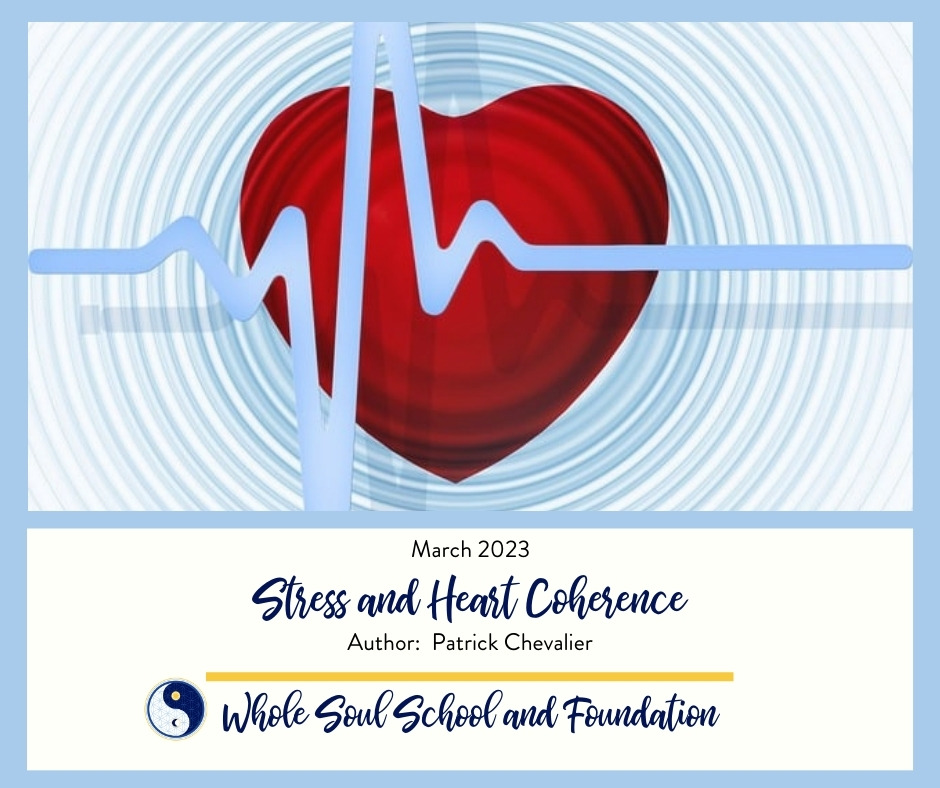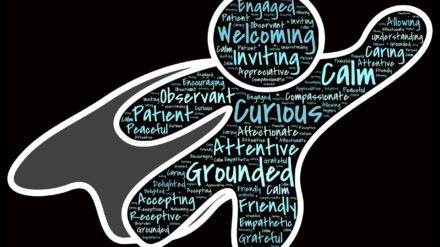Stress and Heart Coherence
by Patrick Chevalier
The last few years have been a challenge for all of us in this world. Events and conflicts, whether on the world stage or in our personal lives, have strained our physical, emotional, mental, and spiritual resources. Stress has become an even more integral part of our lives and so I thought it would be appropriate to delve into the subject a little more and discuss stress, what it does to our bodies and mind, and what we can do about it.
What is “stress”?
For the purpose of this text, when I say stress I mean anything at all that happens to us. It could be losing a job, buying a house, or a breakup. But it could also be anything as mundane as needing to go to the bathroom or make yourself lunch.
Of course, for most people, going to the bathroom or making yourself lunch is not very stressful. It would fall into the green category – 1 and 2 in the figure below. Things that fall into the green category do not trigger our body’s stress response; we still have access to all of our resources and we think clearly.
Fig.1: Categories of stress

Something important to remember here is that this is completely and utterly subjective; it can be different for everyone. So we can’t judge if something is very stressful for someone else but completely insignificant to us (more about this later). Where something falls on this scale is perception based and it is very important to remember that.
Now what about things that do trigger our body’s stress response?
Well, they fall into either the orange or red categories.
When something falls into the orange category (3 or 4 in the figure above), that’s when you go into fight or flight mode.
When it falls into the red category (5 or 6 in the figure above), that’s usually when we freeze, either like a deer in the headlights of a car or when become very still and feel like we lose all our means. In the far away past, the “freeze” reaction saved our lives by preventing a predator from seeing us.
These reactions – fight, flight or freeze – are our body’s stress responses and they are very important. These instinctual reactions allowed us to survive as a species since the very beginning of humanity. But nowadays, they being triggered by so many things, all the time. For example, some people might have to present themselves in a meeting and that alone can trigger their body’s stress response; cold and sweaty hands, shallow breathing, and feeling like the brain is foggy. In that situation, at some level, it’s like speaking in public might be dangerous or threatening. Again: it is perception based.
Having our body’s stress response activated in many situations all the time causes serious health issues.
When our bodies stress response is triggered, it releases a bunch of hormones and neurotransmitters that make sure our body has what it needs to survive an “attack,” to be able to either fight or flight.
That response starts with the emotional brain and that’s the sympathetic nervous system; the amygdala asks the adrenal glands to release cortisol in the body and that’s when there is this whole chain of things getting triggered. Because the emotional brain is involved, it is all linked to the emotions that events trigger within us. And the emotions triggered by something are different for everyone. That is why I insist on the fact that it is perception based.
So when the emotional brain triggers the stress response, we lose our connection to our rational brain; the cortex. That varies based on the level of stress ~ meaning where on the scale (in the figure above) the situation might fall for you. Does it fall in the green, orange, or red category?
This chain, or hormones and neurotransmitters (the stress response), is not supposed to be triggered often, just when needed. Long term, if it is triggered often, it becomes the main cause of a lot of our Immune Deficiency Diseases including cancer, arthritis, Crohn’s disease, etc. Long term, it also leads to burnouts and depression.
They did tests on thousands of people to check the cortisol levels, which is present only when our body’s stress response is activated, and everyone has a little cortisol in their system which means that everyone is in a state of stress at some level all the time! With our work and lifestyle, it’s really difficult not to be. And that is before the 2020 pandemic.
Drinking coffee and tea makes our bodies release cortisol. The whole “cortisol thing” is very inflammatory and inflammation causes our immune system to go into overdrive trying to fix all that is happening in our bodies. It’s resources are spread too thin and it is not able to go everywhere and heal what needs to be healed.
Heart Coherence
Enter Heart Coherence. The HeartMath Institute in California has been doing research on it for a very long time and this is how they define Heart Coherence:
The Heart Coherence Physiological State occurs when our body’s systems, . . . our breathing, heart rhythms, brain rhythms, and hormonal response . . . are in sync with each other.
They discovered that heart coherence not only affects physical processes, but also our mental and emotional balance and composure. Their research showed that heart coherence can be self-generated leading to less mental and emotional stress and more inner security and stability. In summary, Heart Coherence is a synchronized and empowering state, physically, emotionally, mentally, spiritually, allowing us to become our best selves.
https://www.heartmath.com/blog/health-and-wellness/what-is-heart-coherence/
In short, this means that by practicing heart coherence, things shift to the left on the scale; the stress response is triggered less or in less situations:

Some things that were in the red category shift to the orange category and things in the orange category shift to the green category. It’s really amazing!
Practicing heart coherence is just a breathing technique; it is purely physical (physiological) and it doesn’t require us to know how to meditate. Of course adding this breathing technique to our meditation practice is highly beneficial ~ but it is not required.
As mentioned by HeartMath, Heart Coherence is a physiological state and right now, our body is trained to automatically trigger its stress response and be in a state of stress. So we need to train our bodies to react differently to things. Practicing the Heart Coherence Breathing Technique does just that by conditioning our bodies to a different response, a different physiological cascade of hormones and neurotransmitters.
I’ve talked about the body’s stress response which is triggered by the emotional brain and the sympathetic nervous system but we have a second nervous system: the parasympathetic nervous system. The parasympathetic nervous system is all about calming the body down using other hormones and neurotransmitters that are beneficial for the health of our body. The parasympathetic nervous system actually inhibits the sympathetic nervous system and its stress response. That’s the key!
The Heart Coherence Breathing Technique
There are five elements to the Heart Coherence Breathing Technique. Each element helps to engage the parasympathetic nervous system and to therefore inhibit the sympathetic nervous system.
I suggest that you start with the first two or three elements of the technique so that you can take the time and acclimate yourself to them.
1. Sitting straight, breathe in by the nose and out by the mouth.
Breathing in through the nose and out by the month engages the parasympathetic nervous system. You know how good a sigh feels: it feels like all the tension leaves your body and is often the first thing we do when we start to relax. I suggest we leverage that. When exhaling by the mouth, just relax all your muscles and use your lips to control the rate of the air flow. The rest of the torso just releases.
2. Breathe from the belly.
Breathing in the belly stretches the diaphragm which also engages the parasympathetic nervous system. Our breaths are often in our chest. They are very shallow. I suggest putting a hand on your chest and one on your belly to monitor that you really are breathing from the belly. If it is difficult at first, you can try lying down to practice. But to reap the maximum benefits, you need to be vertical (sit up straight or stand up).
3. Inhale shorter than you exhale.
Having your exhale longer than your inhale engages the parasympathetic nervous system. The suggested rhythm is usually 4 seconds for the inhale and 6 seconds for the exhale but it can also be 5 seconds for the inhale/and 8 seconds for the exhale. Try variations and see what works for you. Just ensure that your exhale is longer than your inhale and that you are breathing this inhale-to-exhale ratio of either 4/6 seconds or 5/8.
4. During the inhale, press the tip of your tongue to your palate, behind your front teeth.
There is a meridian there and applying pressure on it engages the parasympathetic nervous system.
5. Imagine, visualize, or feel that you are inhaling and exhaling through the heart.
This is where you work on your “experience” of breathing into Heart Coherence. For me, I “feel” things a lot in my body. So I feel the air coming into my chest on the inhale and coming out of my chest on the exhale. For you, it might mean visualizing the air coming in and out of your heart. Use your imagination and figure out what positively enhances your personal experience.
As I mentioned, we need to train our body to go into a Heart Coherence Physiological State. To accomplish that, the recommendation is to exercise this breathing technique 20 minutes twice a day for the first 6 weeks and then 30 minutes once a day. There is no rule as to what time is better; do it when you can. We don’t want this to be stressful, quite the opposite. Give yourself this time to take care of yourself. You deserve it.
For more information and/or to contact Patrick Chevalier, send email to: Reiki.patrickchevalier@gmail.com








